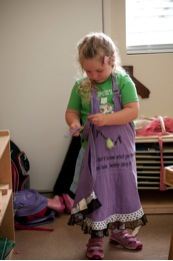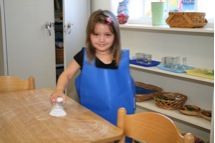Supporting Your Child’s Budding Independence at Home
We just bought a small table and chairs for Sophie’s play room. At the end of the day, I went to the room and I was so surprised and laughed so hard.
Erin I.
I heard some moving around upstairs this morning. I went to check on Hailey and she had gotten out of bed and was brushing her teeth all by herself. She put the cap back on the toothpaste and put her toothbrush back after she was done. (This is not the norm in my house). Hailey started in the toddler program and has been at Le Port for 2 years now. It’s great to see the progress she’s made.
Lori P.
At lunch today, I took the suggestion from the Tuesday folder and put the girls’ dishes and cups in a basket on a low shelf in the kitchen. I already had some cloths stored on a low shelf with tablecloths, and the girls have a small table in the kitchen to eat at. Audrey (3 1/2) set the table for herself and her sister (17 months) and then both of them sat and ate. After they were both done, she cleared the plates and utensils and cups and put them in the sink and then, most stunningly to me, took a cloth and wiped off the table before pushing in all of the chairs. She was so enthusiastic to be able to do it all herself, and smiled broadly when all was clean. Thank you so much for instilling such awesome skills in my little one.
Reba N.
When toddlers and young preschoolers start in Montessori, parents are often amazed at the sudden spurt in independence and skill their children display.
If your child is starting in a Montessori toddler or preschool program, and you want to witness this incredible development in your own child, it helps if you are able to prepare your home environment in ways that support your child’s new skills and desire to be independent.
Here are some ideas to consider:
-
- Provide simple storage spots for belongings right inside the front door. A small rug to place shoes or a basket to put them into and some hooks to hang jackets are a great start. This can help your child get out of the house and back in more independently, and maybe prevent some meltdowns! A little stool to sit on helps, as well.
-
- Make your kitchen accessible to your child. Find a low shelf or drawer to store cups, placemats, and utensils within your child’s reach. Buy glass cups and inexpensive ceramic plates (IKEA is great!) that you don’t mind getting broken. Invite your child to set his own place at the table. A bigger step stool, or a learning tower can be a great help to little people who want to join you in the fun cooking activities at counter height. And, of course, when it comes time to sit down and eat, encourage your child to feed himself: Even young toddlers can eat finger-foods on their own, and start using a spoon; this is what they do in their Montessori classrooms, too.
-
- Organize and simplify the play area. Fewer toys, displayed on open shelves, are preferable over lots of toys in boxes that the children can’t see.
-
- Small chairs and tables facilitate independent snack time and organized playtime. Provide some buckets, sponges, rags, and child-sized brooms, and your child can even clean up after himself.
-
- Facilitate getting dressed independently. Low open shelves, low racks, a mirror and a bench with brush or comb can enable even 2- or 3-year-olds to begin to dress independently, especially if you pre-select an outfit the night before, or lay out two simple choices for a younger child.
-
- Consider a floor or other low bed. Some Montessori parents never have cribs; instead, they baby-proof an entire room and let even infants sleep on a floor bed. While this may not work for every parent, a low bed or a twin mattress on the floor can be a great step up after a crib, instead of a toddler bed.
-
- Make books accessible and create cozy reading areas. The more that books are all over your house, the easier it is for your child to grab a book instead of asking for your iPhone or the TV when you are not available to play.
To see growth in your child’s independence, it’s not necessary to reorganize your entire house (who has the time and energy for that?!). Just pick one or two ideas and make little changes over time. You might think your child is too young to take advantage of these kinds of opportunities for independence—but once she starts school, you might be just as surprised and thrilled as the LePort Montessori parents who wrote the Facebook posts above!
Thanks to Bernadette, a LePort parent of three children, ages infant to preschool, for inviting us into her house to take many of these beautiful pictures!

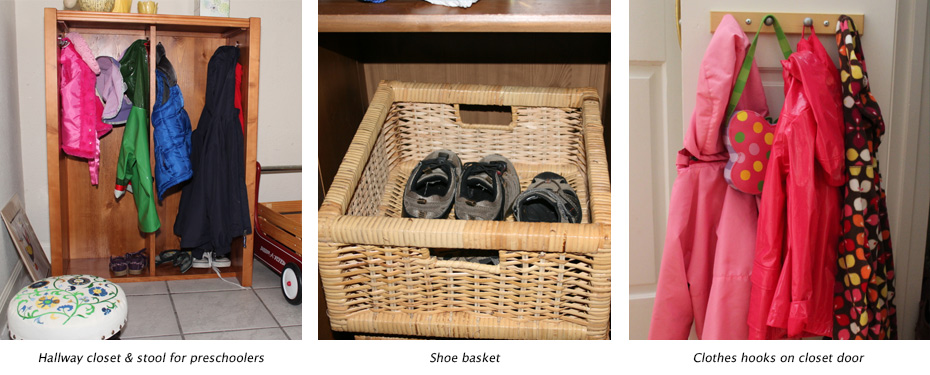
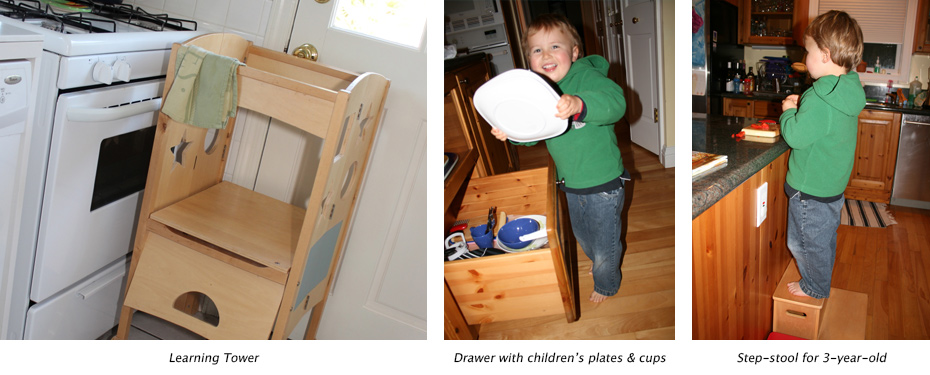
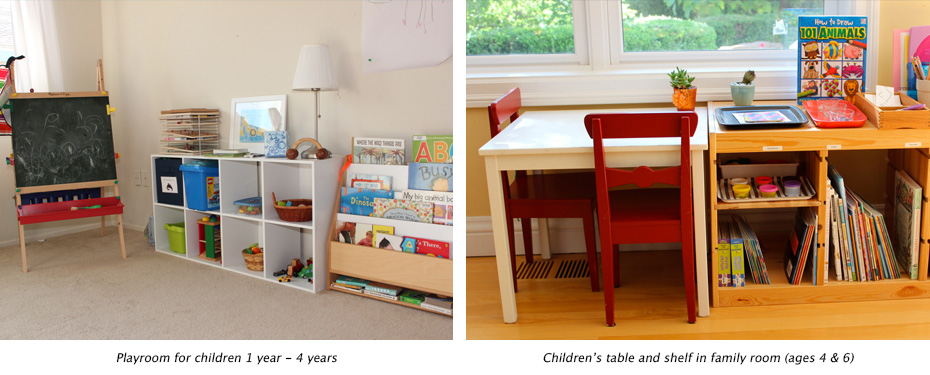

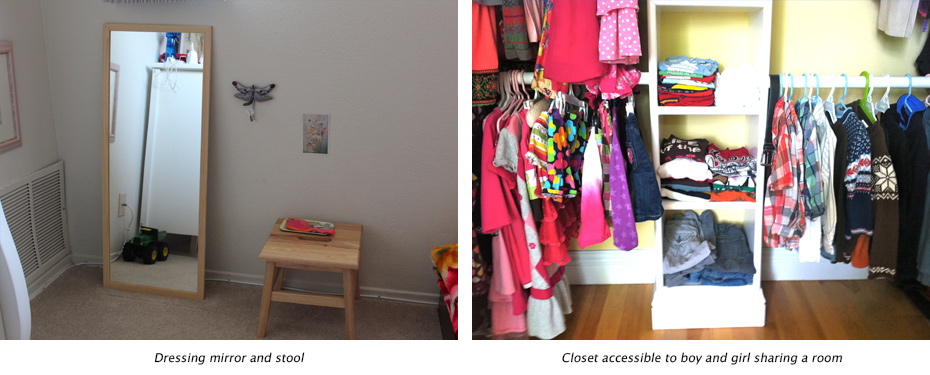
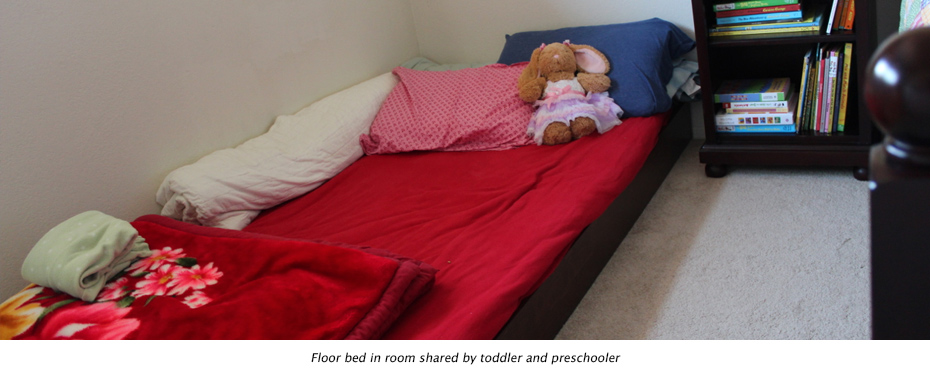
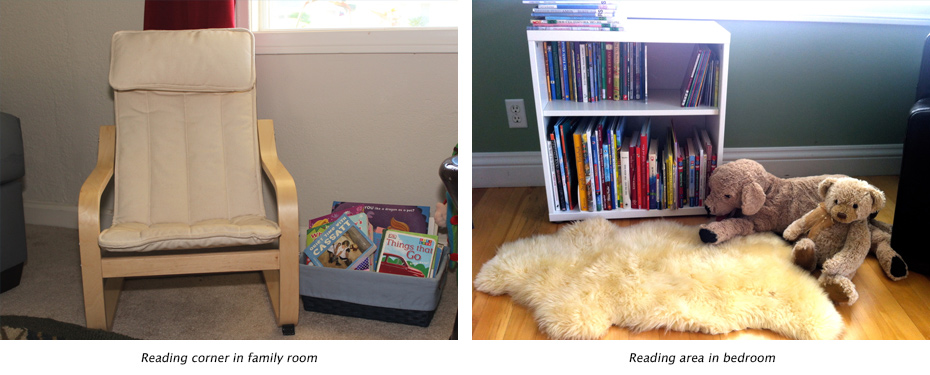
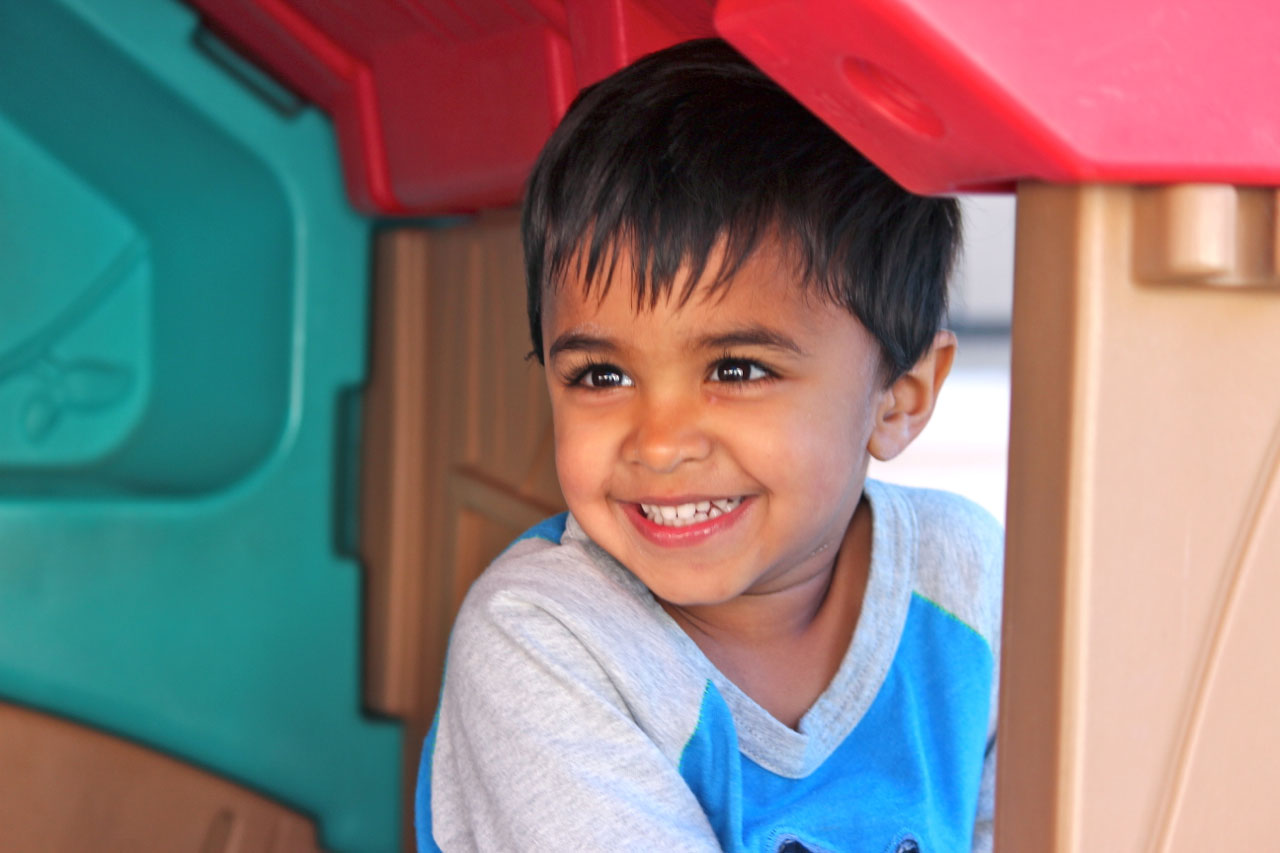
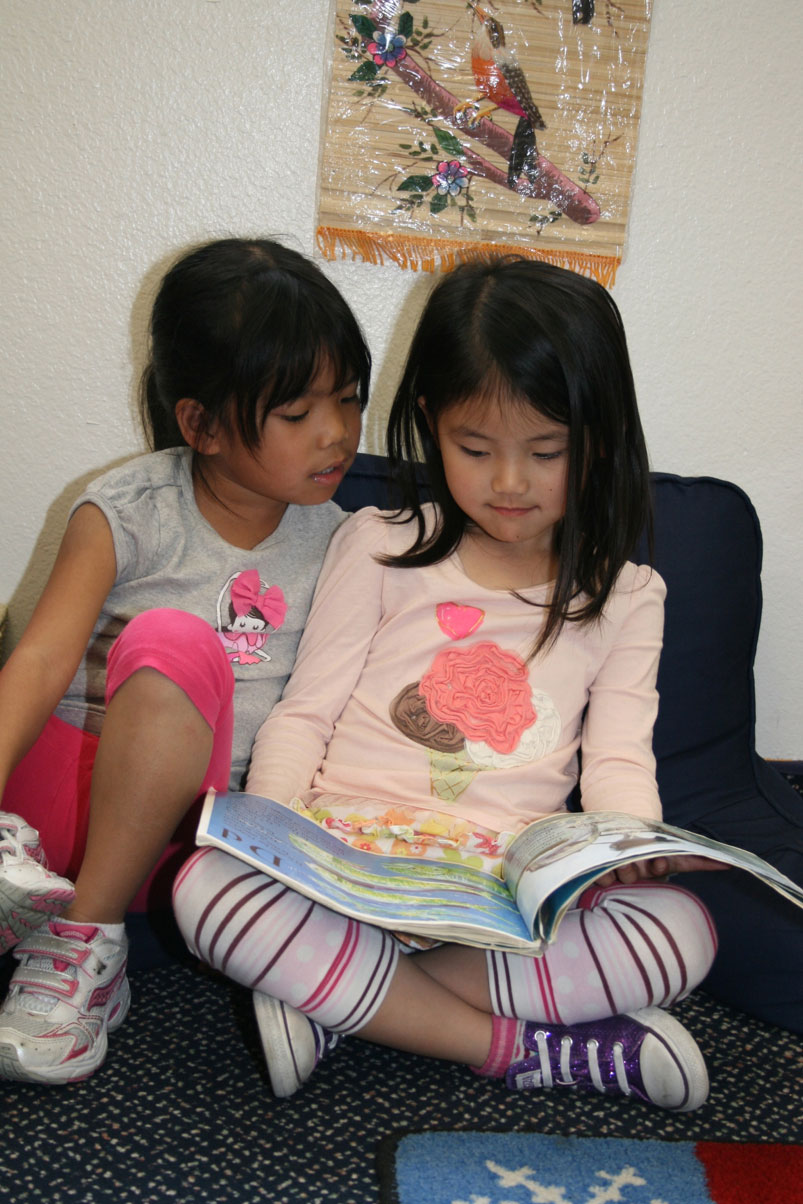
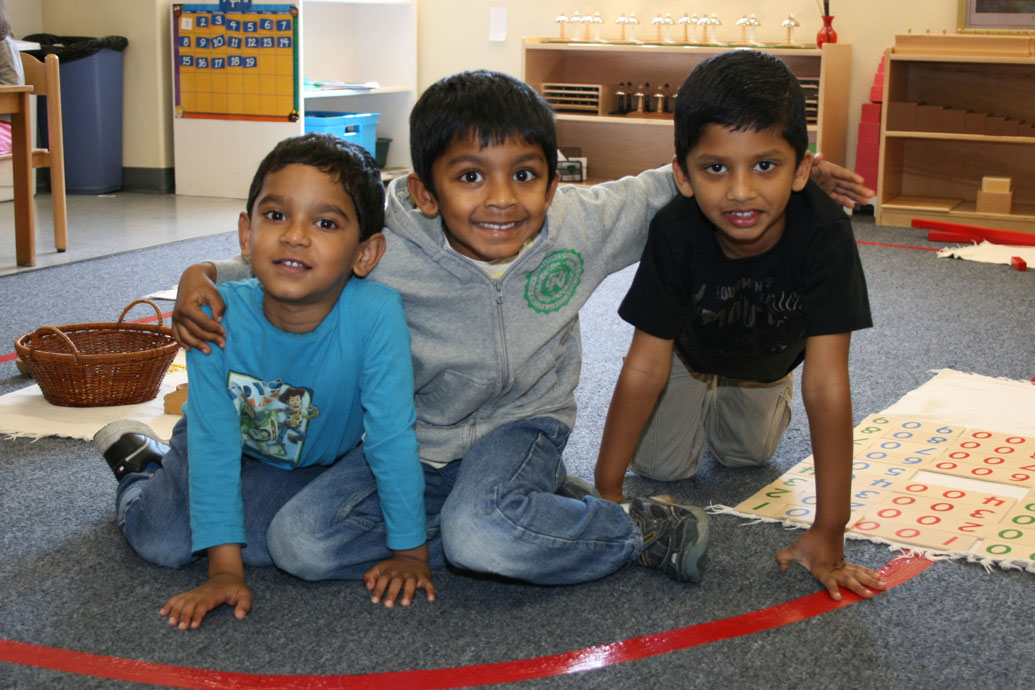
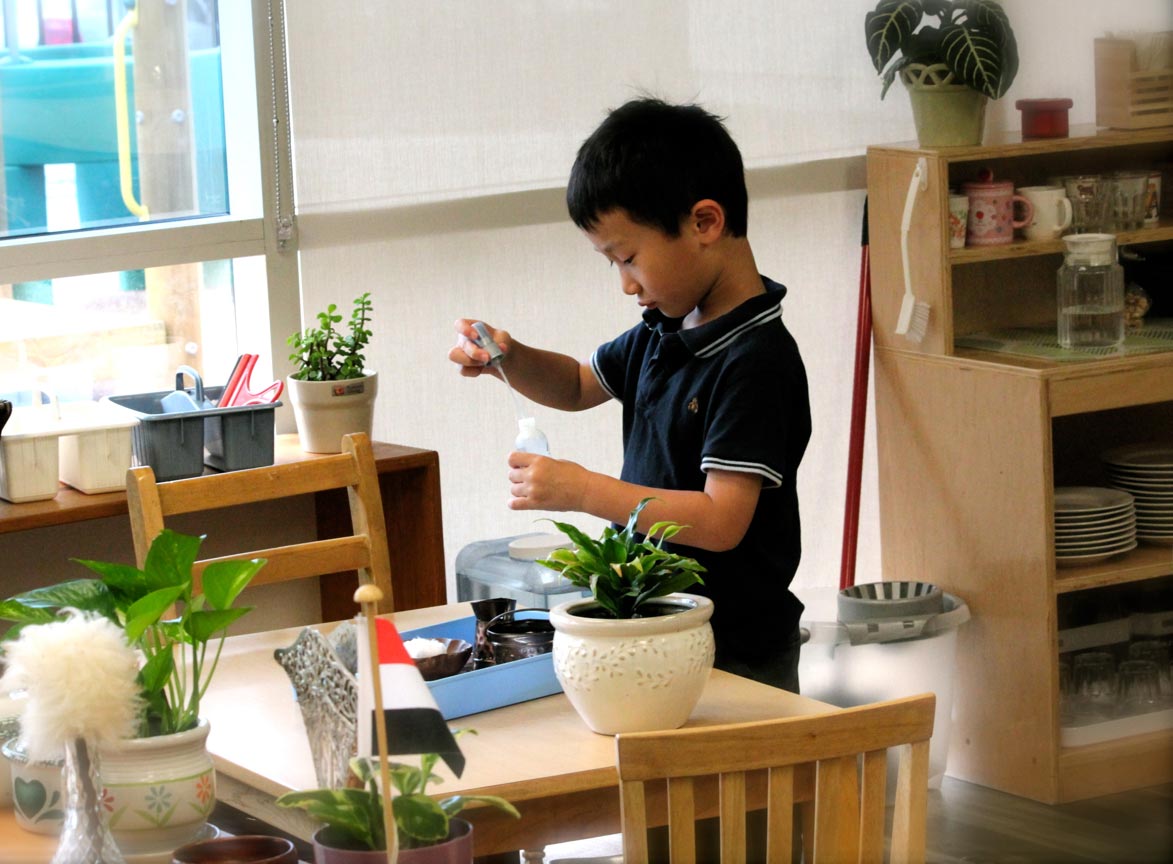
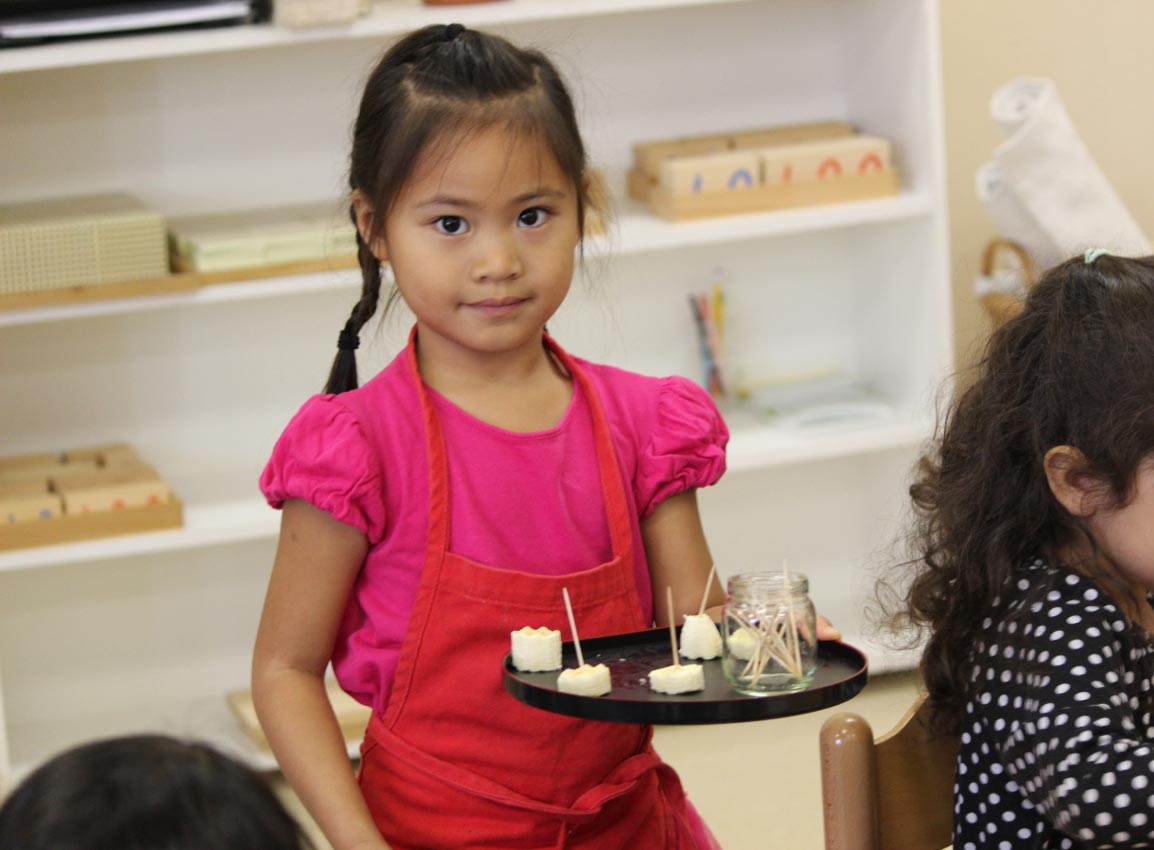
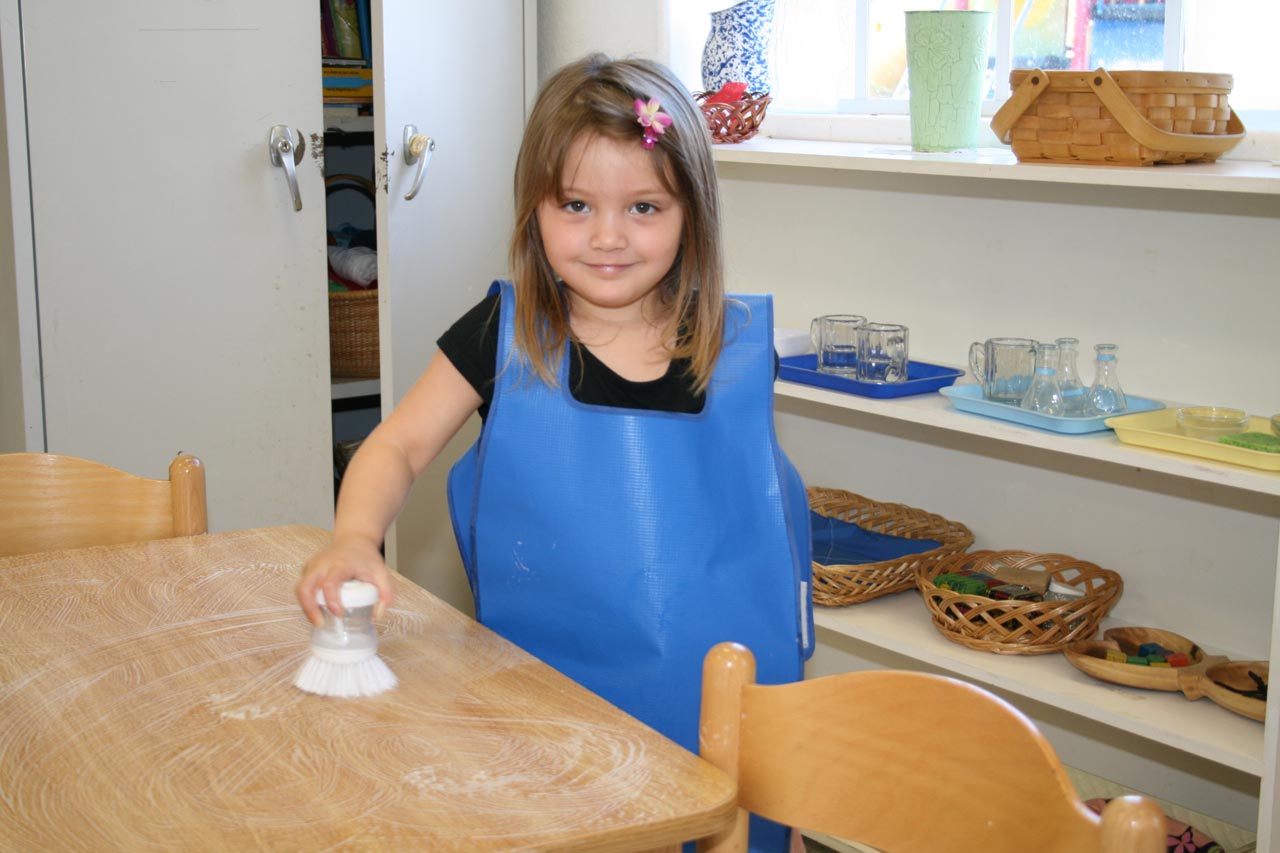
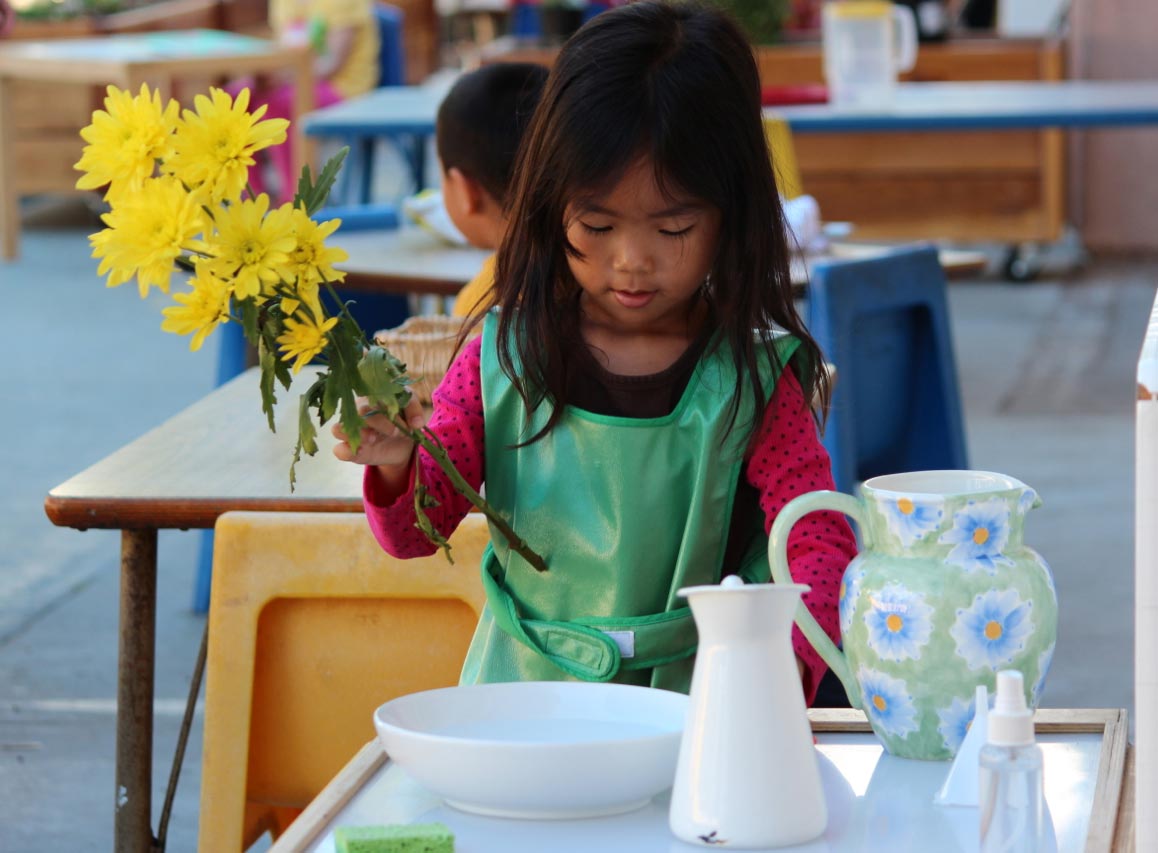
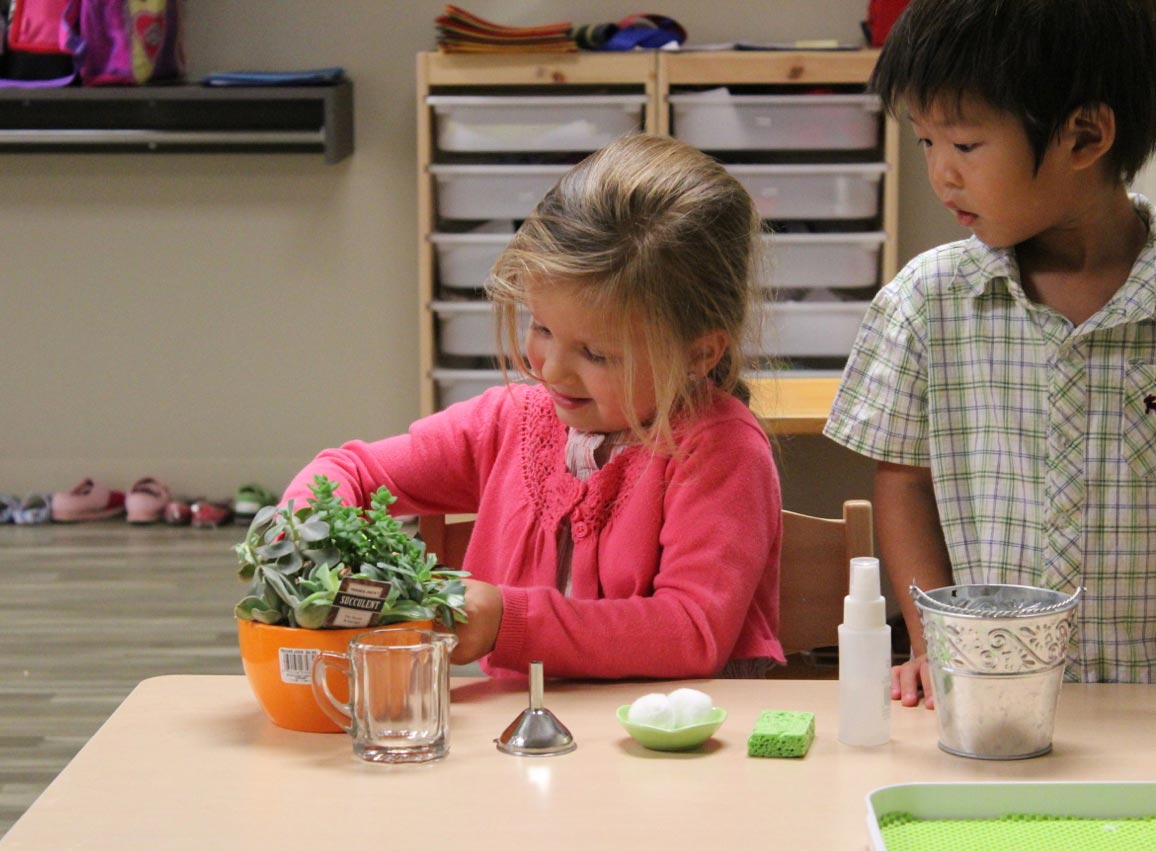
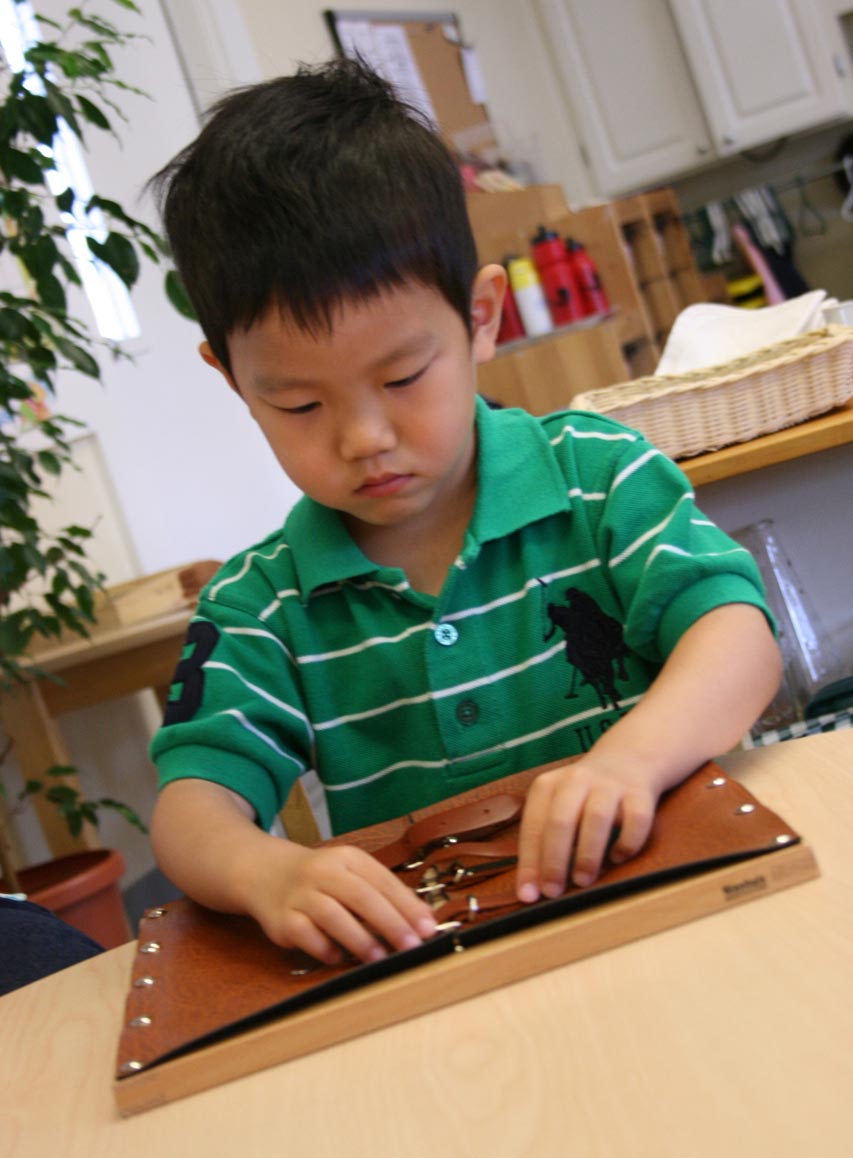
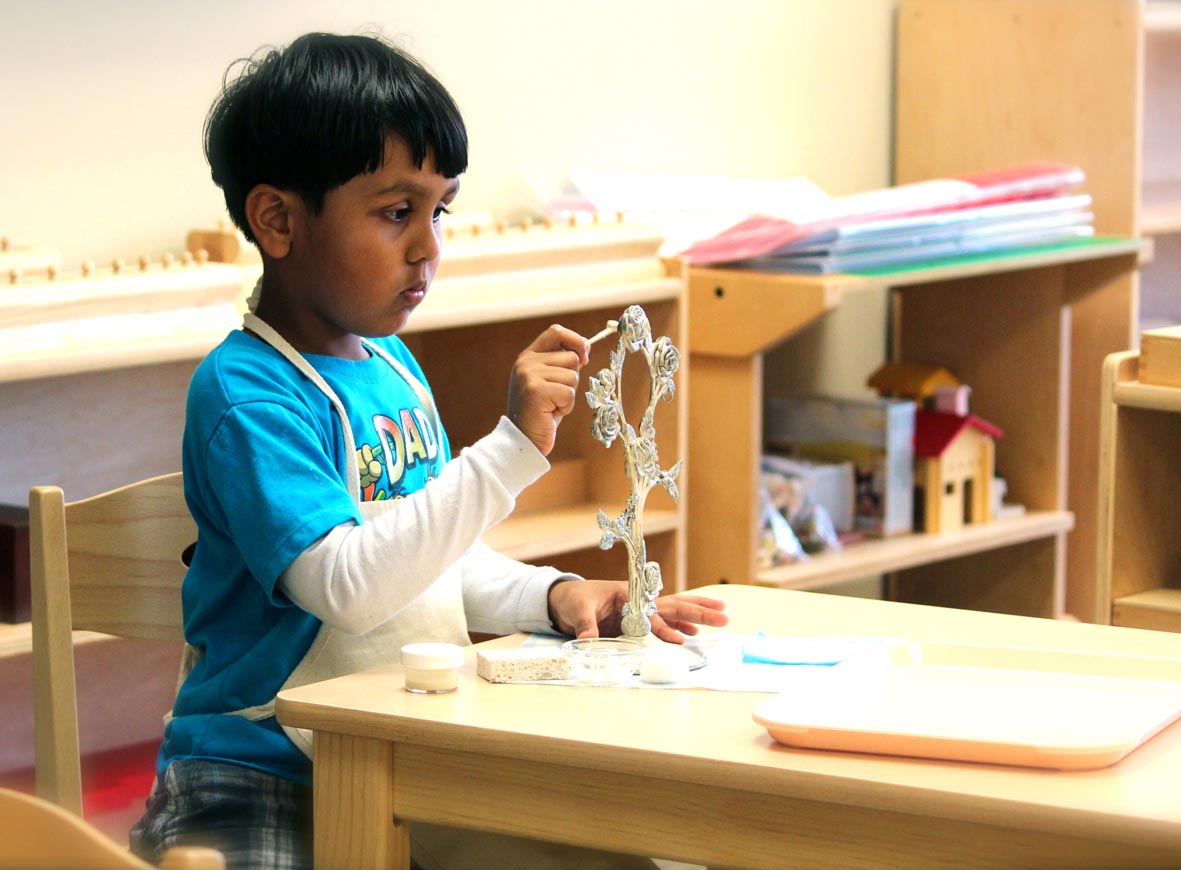

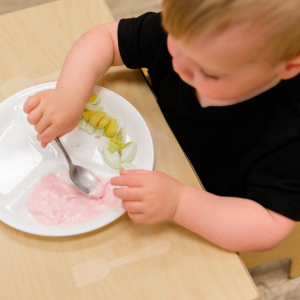
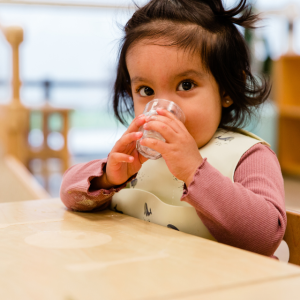
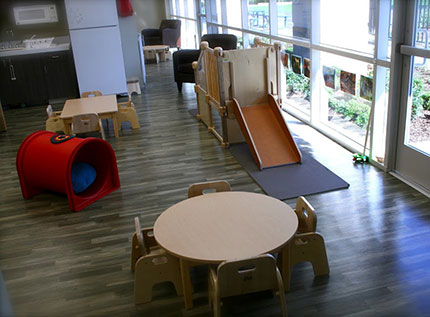
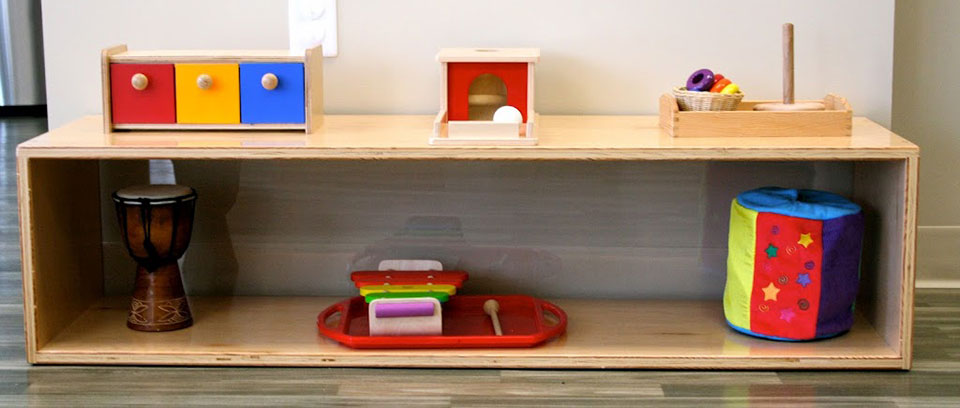 The first two years of life are also a “sensitive period” for order. Babies have a natural need to follow routines, to understand sequences, to know where things in their environment belong. As Montessori educators, we actively support your baby’s need for order: there is a special place for each material, and even children as young as 14 months delight in being able to put things back where they belong on the low, open shelves (something they rarely can do in other daycare settings, which often are cluttered, and have toys stored by staff in boxes or out of babies’ reach.) Our teachers are also masters at stimulating your baby’s language development. As Montessori educators, we know that the “sensitive period” for language acquisition starts at birth. Our teachers provide vocabulary at timely opportunities in response to their emerging interests: we observe and identify what your child focuses on (a blue mobile, a wooden chair, a soft, green, furry ball), and give her the language that goes with her interest.
The first two years of life are also a “sensitive period” for order. Babies have a natural need to follow routines, to understand sequences, to know where things in their environment belong. As Montessori educators, we actively support your baby’s need for order: there is a special place for each material, and even children as young as 14 months delight in being able to put things back where they belong on the low, open shelves (something they rarely can do in other daycare settings, which often are cluttered, and have toys stored by staff in boxes or out of babies’ reach.) Our teachers are also masters at stimulating your baby’s language development. As Montessori educators, we know that the “sensitive period” for language acquisition starts at birth. Our teachers provide vocabulary at timely opportunities in response to their emerging interests: we observe and identify what your child focuses on (a blue mobile, a wooden chair, a soft, green, furry ball), and give her the language that goes with her interest. 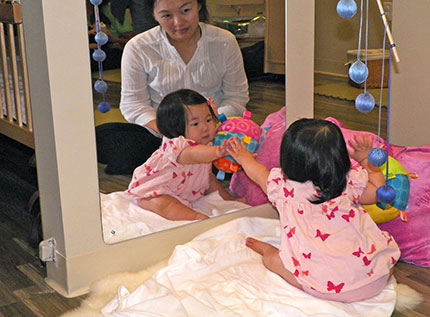 Regulations also require daycare staff to have 12 ECUs (early childhood education units.) Often, that’s the extent of the education and training you’ll find at daycare facilities. We again do not think that’s enough! Research shows that the education level and intelligence of your baby’s primary care provider have a huge impact on his intellectual, social and physical development. You know from your experience as a parent that you often need to think on your feet; that parenting is easier if you have a clear idea of your goals, and the approaches to childrearing you want to follow. That’s why each LePort infant room is led by a university-educated teacher who has also completed the rigorous one-year, Assistant to Infancy training at an AMI training center, or an equivalent MACTE-accredited training program. (In some cases, your child’s teacher may not have completed a degree and/or Montessori training program, but instead has been promoted from an assistant position, where they were carefully evaluated on a range of criteria, from expressive vocabulary to genuine warmth and caring for children. As part of their role, they are enrolled in and completing a training program.)
Regulations also require daycare staff to have 12 ECUs (early childhood education units.) Often, that’s the extent of the education and training you’ll find at daycare facilities. We again do not think that’s enough! Research shows that the education level and intelligence of your baby’s primary care provider have a huge impact on his intellectual, social and physical development. You know from your experience as a parent that you often need to think on your feet; that parenting is easier if you have a clear idea of your goals, and the approaches to childrearing you want to follow. That’s why each LePort infant room is led by a university-educated teacher who has also completed the rigorous one-year, Assistant to Infancy training at an AMI training center, or an equivalent MACTE-accredited training program. (In some cases, your child’s teacher may not have completed a degree and/or Montessori training program, but instead has been promoted from an assistant position, where they were carefully evaluated on a range of criteria, from expressive vocabulary to genuine warmth and caring for children. As part of their role, they are enrolled in and completing a training program.) 